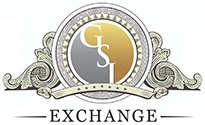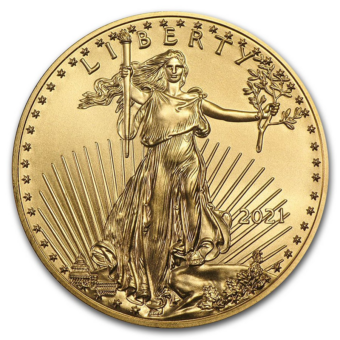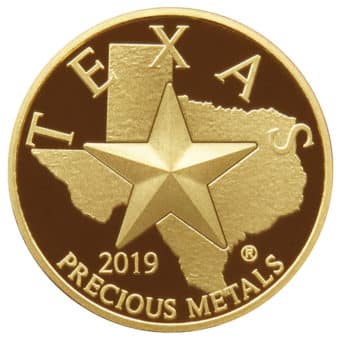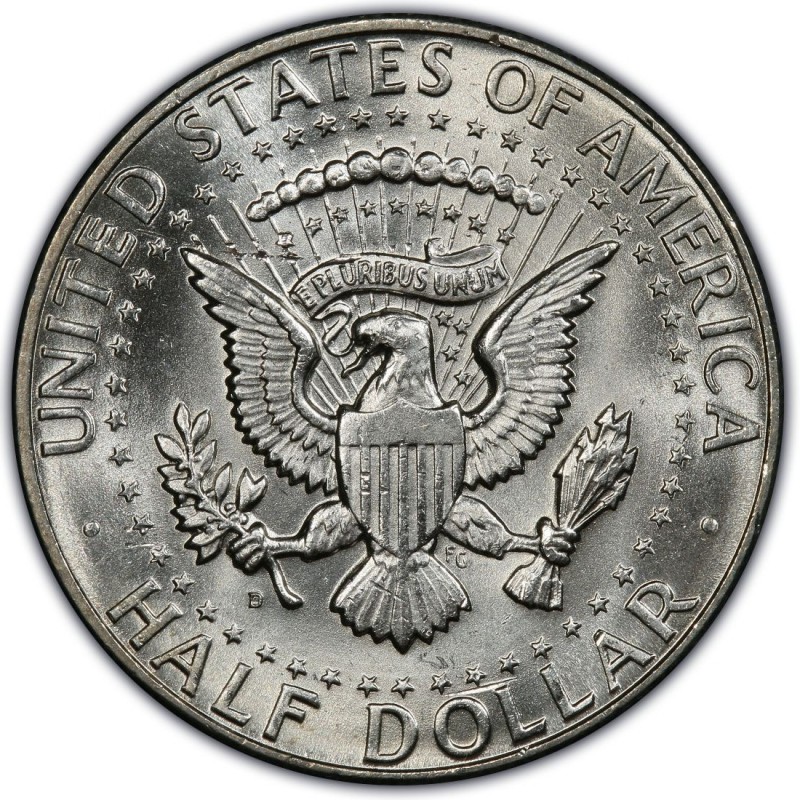Monday - 10.27.25: Gold (-$141.40 to $3,996.10) and silver (-$2.276 to $46.31) sank to three-week lows Monday as hopes for a major U.S.–China trade deal juiced risk appetite, lifted global equities to records, and triggered long liquidation and technical selling; added pressure came from a normalization in silver funding—lease rates slid to 5.6% from the Oct. 9 peak of 34.9%—with liquidity returning and the LBMA weighing weekly silver inventory disclosures (prioritizing silver over gold).
Tuesday - 10.28.25: Gold fell (-$39.20 to $3,980.50) while silver bounced (+$0.471 to $47.245) at midday Tuesday after both hit three-week lows, with gold clawing back about half its overnight losses; still, the recent selloff has inflicted technical damage that suggests near-term tops. Traders eye the Fed’s meeting (a second 25 bps cut is widely expected) amid a shutdown-driven data freeze and policy divisions, while record-high equities (S&P 500 around 6,875) and risk-on flows continue to pressure safe-haven metals.
Wednesday - 10.29.25: Gold (+$47.70 to $4,030.50) and silver (+$0.866 to $48.20) are up at midday on corrective rebounds after heavy selling that signaled possible near-term tops, with a widely expected Fed 25 bps cut adding support. Traders now zero in on the FOMC statement and Powell’s presser for guidance, as a softening labor market argues for easing while sticky core inflation tempers the case—swaps fully price today’s cut and roughly three more by July, but Powell’s tone could shift that calculus.
Thursday - 10.30.25: Gold (-$16.50 to $3,984.70) and silver (-$0.028 to $47.89) dipped early Thursday after the Fed cut rates 25 bps but Powell struck a hawkish tone, warning a December follow-up cut is “far from” guaranteed. His remarks pushed Treasury yields higher, tempered odds of another cut, and highlighted a split inside the Fed—cooling jobs vs. sticky inflation—made murkier by the shutdown’s data freeze.
Friday - 10.31.25: Gold and silver prices held near steady in quiet end-of-month trading, with December gold up $5 at $4,021.40 and silver down $0.026 at $48.595 amid chart consolidation and muted news flow. Global markets were mixed to firmer as U.S. indexes pointed higher. In Asia, Chinese President Xi Jinping urged nations to maintain supply-chain stability following his trade-truce meeting with President Trump, while weak Chinese manufacturing data—its longest slump in over nine years—added pressure for new stimulus. Meanwhile, Trump urged Senate Republicans to scrap the filibuster amid a nearly month-long U.S. government shutdown.
Fed cuts interest rates for second time this year amid labor market weakness
The big picture
The Federal Reserve delivered its second rate cut of 2025, lowering the federal funds rate by 25 basis points to a range of 3.75%–4%. Policymakers moved to cushion a slowing labor market even as inflation remains above the 2% target. The decision underscores the Fed’s balancing act between easing employment pressures and preventing inflation from reigniting.
Driving the news
The Federal Open Market Committee (FOMC) voted 10–2 to approve the cut; Fed Governor Stephen Miran favored a larger 50 bps move, while Kansas City Fed President Jeffrey Schmid opposed any reduction.
Chair Jerome Powell described both the September and October cuts as “insurance,” aligning policy closer to a neutral stance amid mixed signals on inflation and jobs.
Inflation in goods has picked up due to tariff-related price hikes, while disinflation continues in services. Powell noted that excluding tariffs, core PCE may sit near 2.3%–2.4%, closer to the Fed’s goal.
Labor data—delayed by the government shutdown—shows softening job creation and a low but edging-up 4.3% unemployment rate. Powell said, “Layoffs remain low, but job finding rates are down.”
Market expectations for another rate cut in December have fallen sharply following the announcement.
By the numbers
- 25 bps: October rate cut, the second of 2025.
- 3.75%–4%: new federal funds rate range.
- 4.3%: current unemployment rate.
- 54.7%: market odds of another cut in December (down from 90.5% pre-meeting).
Why it matters
The Fed’s latest move signals growing concern about labor-market fatigue, even as inflation refuses to fully settle. By cutting twice in quick succession, policymakers are prioritizing employment support while betting that tariff-driven inflation pressures will fade. But persistent price stickiness could complicate that bet—and risk undermining the Fed’s credibility on inflation control.
What to watch
Whether delayed labor data confirms or contradicts Powell’s “soft but stable” job outlook.
Signs that inflation expectations creep higher if tariffs persist or broaden.
Market reaction to the Fed’s next meeting in mid-December, where another cut is now less certain.
Shifts in unemployment claims or hiring data that might justify a pause—or a third consecutive cut.
The bottom line
The Fed is easing gently into a weaker economy while keeping one eye on inflation risk. For now, Powell’s “insurance” cuts aim to prevent a slowdown from deepening—but the path ahead depends on whether the labor market steadies before inflation pressures reignite.
Gold’s not done: LBMA survey forecasts prices near $5,000 in 12 months
The big picture
After two years of underestimating gold’s strength, market participants are sharply revising their forecasts. The latest London Bullion Market Association (LBMA) survey shows sentiment shifting decisively bullish, even after a sharp correction below $4,000 per ounce. Gold has already logged its best annual gains since 1979, rising more than 50% this year.
Driving the news
LBMA delegates now project gold to reach $4,980.30 per ounce within 12 months—a 25% rise from current prices and over one-third higher than last year’s forecast.
Silver and platinum have outperformed gold year-to-date, with platinum surging 93% and silver up 61%.
UBS’s Wayne Gordon said client gold holdings have doubled in 2025, with the number of investors tripling, reflecting unprecedented demand.
Roughly 40% of LBMA participants expect gold to be the top-performing metal in 2026, while 30% see platinum leading next year and 21% favor silver.
By the numbers
- $4,980.30: expected gold price in 12 months (+25%).
- +50%: gold’s 2025 performance so far, strongest since 1979.
- $59.10: silver’s 12-month target (+25%).
- $1,815.50: platinum’s 12-month target (+14%).
Why it matters
The survey underscores a major sentiment reset: gold’s rally is being driven by powerful investment inflows rather than speculative hype. A sustained climb toward $5,000 could reinforce gold’s role as a defensive anchor amid currency and inflation uncertainty. But the parabolic rise also raises the odds of profit-taking and volatility shocks if momentum fades.
What to watch
Whether gold can reclaim $4,360 resistance and sustain upward momentum.
Continuation of platinum’s outsized gains beyond 2025.
Shifts in ETF and institutional gold holdings that could confirm or contradict bullish sentiment.
Macro triggers—interest-rate moves or inflation surprises—that may determine if $5,000 becomes a ceiling or a new base.
The bottom line
The LBMA crowd is betting that gold’s rally still has room to run. But after such a historic surge, the next 12 months may test how much speculative heat the precious-metals market can truly absorb.
ISO 20022 and Your Privacy: What to Know (and Watch Out For)
The big picture
ISO 20022—the new global standard for financial message formats—is now fully embedded in U.S. payment systems. It promises cleaner automation, faster processing, and richer data. But that same richness also expands the volume of personal information moving through payment rails like Fedwire, CHIPS, and FedNow, exposing Americans to heightened privacy, retention, and compliance risks.
Driving the news
The Federal Reserve’s Fedwire Funds Service switched to ISO 20022 on July 14, 2025, following CHIPS (April 2024) and FedNow, which launched with the standard.
On November 22, 2025, ISO 20022 becomes fully activated across U.S. financial systems, completing the transition to the richer, structured messaging framework.
ISO 20022 replaces decades-old formats with structured, machine-readable fields—many carrying sensitive personal details like full addresses, dates of birth, and identifiers.
Industry leaders and vendors (SWIFT, Visa, Clearstream) warn that enriched fields can magnify privacy exposure when data crosses borders or is stored in multiple systems.
U.S. regulators emphasize that ISO 20022 isn’t a surveillance law—but by standardizing what can be sent, it enables far more consistent and detailed data collection under existing rules.
By the numbers
- 3: major U.S. payment systems (Fedwire, CHIPS, FedNow) now ISO 20022-enabled.
- Nov 22, 2025: full activation date for ISO 20022 in the U.S. financial system.
- +50%: estimated increase in structured personal fields per transaction.
- Nov 2025: deadline for mandatory structured addresses in global CBPR+ schemes.
- 24/7: speed of FedNow instant payments—raising stakes for mistakes or data leaks.
Why it matters
ISO 20022’s expanded data model lets banks and corporates share more information than ever before—creating efficiency for institutions but larger attack surfaces for individuals. Every new “structured field” means additional retention, access, and cross-border compliance risk. In effect, the U.S. financial system now transmits more personal data by default, even if privacy laws haven’t changed.
What to watch
How banks populate optional fields like birth dates or structured addresses in Fedwire and FedNow messages.
Cross-border transfers that route through data centers subject to GDPR or other privacy regimes.
False-positive sanctions or AML screenings caused by richer but inconsistent data.
Vendor and bank transparency on retention timelines, access controls, and data minimization practices.
The bottom line
ISO 20022 isn’t surveillance—but it institutionalizes the global flow of richer personal data through U.S. payments. The efficiency gains are real, but without strict minimization, retention limits, and access safeguards, Americans’ financial privacy could erode quietly through the pipes of modernization.
NEXT WEEK’S KEY EVENTS
Economic Calendar: November 3 – 7, 2025 (ET)
MONDAY, Nov 3
- 9:45 am — S&P Global Final U.S. Manufacturing PMI (Oct.)
- 10:00 am — ISM Manufacturing (Oct.)
- 2:00 pm — Fed Governor Lisa Cook speaks
TUESDAY, Nov 4
- 10:00 am — *JOLTS (Sept.)
WEDNESDAY, Nov 5
- 8:15 am — ADP Employment (Oct.)
- 9:45 am — S&P Global Final U.S. Services PMI (Oct.)
- 10:00 am — ISM Services (Oct.)
THURSDAY, Nov 6
- 8:30 am — *Initial Jobless Claims (Nov. 1)
- 11:00 am — New York Fed President John Williams speaks
- 4:30 pm — Philadelphia Fed President Patrick Harker Paulson speaks
- 5:30 pm — St. Louis Fed President Alberto Musalem speaks
FRIDAY, Nov 7
- 8:30 am — *Employment Situation Summary (Jobs Report) (Oct.)
- 9:30 am — Dallas Fed President Lorie Logan speaks
- 10:00 am — Consumer Sentiment (prelim) (Nov.)
Government data subject to delay due to government shutdown. “NA” indicates not available due to shutdown.
IMPACT ON PRECIOUS METALS MARKETS
S&P Global Final U.S. Manufacturing PMI (Mon, 9:45 am ET)
- Stronger expansion (>50 and rising) → risk-on tone, yields/dollar support; bearish for metals.
- Softening/contracting (<50 or falling) → growth worries; bullish for safe-haven metals.
ISM Manufacturing (Mon, 10:00 am ET)
- Above 50 or improving → resilience/higher-for-longer bias; bearish for gold/silver.
- Below 50 or weakening → slowdown signal; bullish for metals.
Fed Governor Lisa Cook speaks (Mon, 2:00 pm ET)
- Hawkish policy emphasis → real yields up; bearish for metals.
- Dovish/risk-management tone → easier policy hopes; bullish for metals.
JOLTS (Tue, 10:00 am ET)
- Higher openings/tight labor → wage-pressure risk, yields firm; bearish for metals.
- Lower openings/easing tightness → cools inflation path; bullish for metals.
Subject to delay.
ADP Employment (Wed, 8:15 am ET)
- Stronger private payrolls → growth/inflation lean; bearish for metals.
- Weak/negative print → labor softening; bullish for safe havens.
S&P Global Final U.S. Services PMI (Wed, 9:45 am ET)
- Firm services activity → supports dollar/yields; bearish for metals.
- Soft services → risk-off drift; bullish for gold/silver.
ISM Services (Wed, 10:00 am ET)
- Rising/above 50 → demand resilience; bearish for metals.
- Falling/below 50 → slowdown signal; bullish for metals.
Initial Jobless Claims (Thu, 8:30 am ET)
- Rising claims → labor cooling; bullish for gold/silver.
- Falling claims → supports higher-for-longer rates; bearish for metals.
Subject to delay.
NY Fed’s Williams (Thu, 11:00 am ET)
- Hawkish guidance → dollar/real-yield support; bearish for metals.
- Dovish/caution on growth → easing hopes; bullish for metals.
Philadelphia Fed’s Paulson (Thu, 4:30 pm ET)
- Hawkish tone → bearish for metals.
- Dovish tone → bullish for metals.
St. Louis Fed’s Musalem (Thu, 5:30 pm ET)
- Hawkish → bearish for metals.
- Dovish → bullish for metals.
Employment Situation (Jobs Report) (Fri, 8:30 am ET)
- Hot payrolls/low unemployment/firmer wages → real yields up; bearish for gold/silver.
- Cool payrolls/higher unemployment/soft wages → easing trajectory; bullish for metals.
Subject to delay.
Dallas Fed’s Lorie Logan (Fri, 9:30 am ET)
- Hawkish liquidity/markets stance → bearish for metals.
- Dovish/financial-stability focus → bullish for safe havens.
Consumer Sentiment (prelim) (Fri, 10:00 am ET)
- Improving sentiment/inflation expectations up → yields/dollar support; bearish for metals.
- Falling sentiment/lower inflation expectations → risk-off tilt; bullish for gold/silver.
NA = Not available due to government shutdown.






















